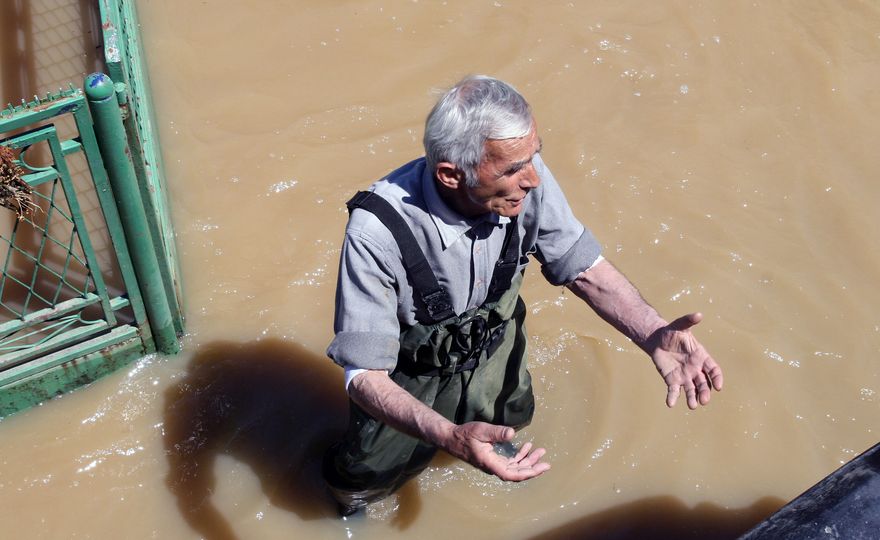“We were surprised to see how long the weather system that led to the flooding stayed over the region – it’s like the Vb cyclone ‘Yvette’ was trapped there,” says Lisa Stadtherr from the Potsdam Institute for Climate Impact Research (PIK), lead-author of the study to be published in Science Advances. “Day after day the rain was soaking the soil until it was saturated, which lead to the flooding that reportedly caused several dozen casualties and 3.5 billion Euro of damages.”
While the mean daily rainfall in the Balkans has increased only a little since 1950, the intensity of the strongest rainfall events rose by one third, the scientists found. In May 2014, daily rainfall amounts were locally bigger than ever before in the observed period. The frequency of such potentially devastating extremes in the Balkans, though they’re still rare, doubled over the past sixty years.
“We had a similar situation in 1997 in Germany, resulting in the Elbe flooding”
“This is worrying, all the more because we’re seeing increasing extreme rainfall in many parts of the globe,” says co-author and PIK project head Dim Coumou. “The changes over the Balkan are substantially larger than those expected from simple warming of the air.” Regional temperatures rose by one degree since the middle of the past century, and the increased water holding capacity of warmer air intensifies heavy rainfall by about 7 percent per degree of warming. “Yet the observed rainfall changes in the Balkans are roughly five times that much – hence other factors must have come into play.”
The scientists detected that the unusual trapping of the weather system over the Balkans happened at the same time when so-called planetary waves of the jetstream circulation also became trapped. “This does not prove causality, but the co-occurrence is at least suspicious – particularly since we had a similar situation for instance in 1997 in Germany with cyclone ‘Zoe’, resulting in the devastating Elbe flooding,” says Coumou. “We provide evidence that the near stationarity of the waves was linked to a subtle phenomenon we call resonance.”
A mechanism for creating extreme weather events in summer in general
This mechanism has first been put forward by PIK scientist Vladimir Petoukhov only a few years ago, opening a new branch of research; he is co-author of the present study. The scientists produced a video to explain the mechanism which might be a decisive factor for creating extreme weather events in summer in general (see weblinks below).
“Our findings provide more evidence that planetary waves cause extreme weather events,” says co-author Stefan Rahmstorf, chair of PIK’s research domain Earth System Analysis. “When these waves start to resonate this can have serious impacts for people on the ground. I am concerned that the ongoing climate change may be creating conditions more favorable for this kind of resonance.”
Article: Stadtherr, L., Coumou, D., Petoukhov, V., Petri, S., Rahmstorf, S. (2016): Record Balkan floods of 2014 linked to planetary wave resonance. Science Advances [doi:10.1126/sciadv.1501428]
Go to a video on planetary waves
Go to Potsdam Institute for Climate Impact Research
Weblinks to previous studies on the subject:
Trapped atmospheric waves triggered more weather extremes
Cold, hot or dry: Persistent weather extremes associated with decreased storm activity
Summer storm weakening leads to more persistent heat extremes

